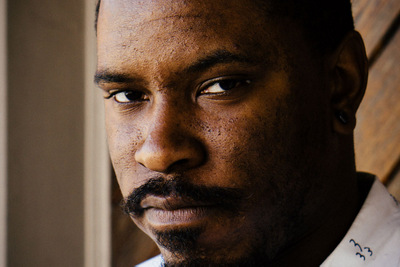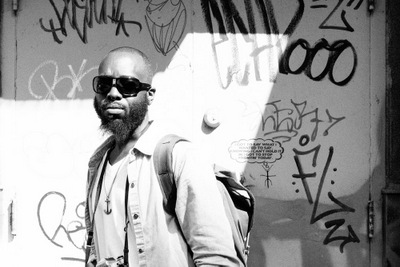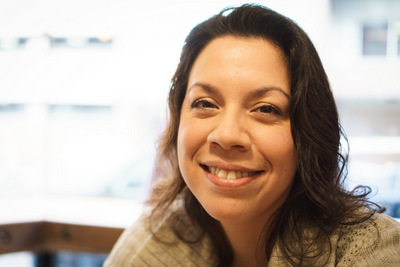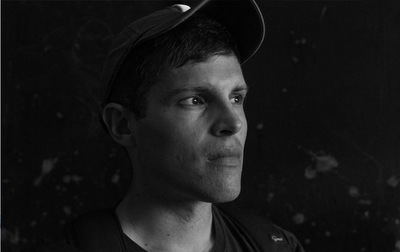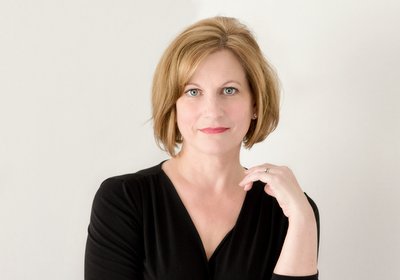buy antibiotic online
buy amoxicillin uk click amoxicillin 500 mg capsulessertraline visa
antidepressant online delivery
clomid uk success rates
clomid london drugs go clomid london drugsInterview with Victoria Gertenbach
The multi-talented Victoria Gertenbach spent some time with us to tell us about her passion for the textile arts, and in particular, quilting. She explained how she's inspired by the geometric shapes and shabby finishes of the old barns of Lancaster county, and how she incorporates those flashes of inspiration into her beautiful quilts. Read on to learn more about Victoria!


For about 18 months now, you've been providing the calendar image for Visit Lancaster. I recall at the time when I asked you about that, you said something like "I don't understand, why me? I'm not a photographer." That blew me away. Why
I guess I equate being a photographer to somebody who has knowledge of a high-skill camera, how to work it, developing, printing methods…a grown-up camera. I don't have that. Years ago in art school, I did take photography, and even then, I didn't feel like I ever grasped that. That was before digital; I could never retain what the hell they were talking about. I just kind of faked it. I somehow took pictures, and they were deemed worthy. I got good grades, and they would even sometimes say, "Look! She really knows what she's doing." I had no idea what I was doing, and I still feel that way.
You're a textile artist. Do you feel that if people were using higher-skilled machinery, they would be better than you? Isn't it the end product?
No, because I really value textile work done by hand, and I think someone doing textile work by hand, or by using simple machinery, can still have a vast knowledge of the tools they’re using, and how to use them to achieve the best results. (Which I guess is what I am able to do with a simple phone camera, or a point and shoot.) So, I do get what you’re saying about the end product. In regards to photography, I would say I've got a good eye, I'm good at composition, and I understand enough about the very simple tools I’m using. However, I’ve never grasped the nuance of a “real” camera, the mechanics of it, or the technical language of it. Hmm…I guess I have a bit of a double standard. Something to think about.
Is there a moment in photography you want to do something that you don't know how to do?

No, I just don't feel that. I suppose I would feel that if you gave me a more technical camera, as again, I wouldn’t understand it. But for my intended purposes, which would be photographing my textile artwork to document it, photographing what inspires me, and of course photographing family stuff, the point and shoot Canon that I have, as well as my little Android phone camera, allow me to get the job done without feeling overwhelmed. I like simple!
The very reason that I got into Instagram was that I liked the simplicity and immediacy of it, and that it's accessible to everyone. I enjoy the idea of anyone being able to use a simple tool, record what they find visually interesting, and create a little bit of art that way. And then, share it with others. How cool is that?! A child could use it to create art. I'm using it like a child. I can say I’m an artist in that my photos are artistic, but I can’t say I’m a photographer.
There might be other mediums that you feel you're not worthy to be on, that you might have to take yourself too seriously to put your photos on?
Well, I don't think I could put my photos in a gallery, because I wouldn't even understand how to get to that point. Because I'm using such a low resolution camera, once they were seen on that kind of scale, they wouldn't look very good.
It's hard to say. That could be part of the art of it.
I’ve thought of that, and I could pitch it like that. I guess personally, I feel in order to earn that title of photographer, or to get to that place where I could exhibit my photos, I would have to have more knowledge. Kind of the old adage, “You have to first know the rules to break the rules.” But, I also wouldn’t hold others to that. Again, a bit of a double standard!
You did say you're an artist. Is textile artistry your art?
Originally, back in art school, it was graphic design, which I only got into because that was where the illustrative courses were, and that's what I originally wanted to do. I got into textile art after that for a variety of reasons.
Before I'd seen your textile art, I'd never seen anything like that. Do you feel that?
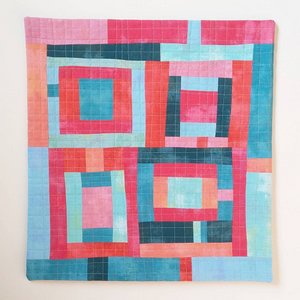
Yes and no. I do pay attention to what other people are doing, because I want to support the community of textile artists that are out there, and that I’m a part of. On the other hand, I try not to get caught up with trends, as I don't want to be influenced by what a lot of people are doing. I want to keep my artist voice clear and true to myself. I've been told that people who are familiar with my work can tell it's my work. That's good. It makes me feel that there must be something distinctive about what I’m making. At the same time, I’ve definitely been influenced by the works of Gee's Bend quilters, as have other quilter’s out there. I’m definitely not alone in that.
Gee’s Bend is an isolated area in Alabama. Most of the ancestors of those that live there were once slaves, and it’s history is one of poverty. Quiltmaking was a necessity, as the women needed to make quilts to keep their families warm. Sometimes, they even burned the older, more worn out quilts as another way of trying to stay warm, and it’s estimated that only about 10% of the old quilts survived.
The quilts that they made were not the precisely measured, cut, pieced, and stitched quilts that we’re often more familiar with. Instead, they were utilitarian quilts, which I’m fascinated by, made from whatever materials were on hand. Measurements eyeballed and fabric hand-cut, resulting in irregular lines and shapes. They weren't made for pretty, they weren't made for show, but there was a lot of pride, creativity, and artistry that went into them.
They often made their quilts out of improvised housetop blocks, which is a variation of a log cabin block, and that’s something I like to do as well. Everything was pieced together intuitively, often inspired by the shapes that they saw all around them, in the fields, and the old ramshackle structure of their homes.
Before learning about the quilts of Gee’s Bend I was already interested in the idea of making improvised utilitarian quilts, and was finding design inspiration from the local old barns and farm land, not really knowing if this was being done already. I started to investigate and research utilitarian quilt making, and at that same time, the Gee’s Bend quilts kind of exploded onto the scene. When I saw their work, I really connected with it. When I got to see the quilts in person at the Philadelphia Museum of Art, it was sort of like a religious experience. I think I even cried because they touched me so deeply.
You said a lot of this stuff is utilitarian to the point that they were burning it. What is it about utilitarian that fascinates you?

I guess it’s the emotional connection to hard times, perseverance, family, and how the act of making a quilt can bring so much comfort. I've been quilting for about twenty years now, and the original thing that got me interested was a book I found at the public library called the The Quilters: Women in Domestic Art. The book recorded the oral history of women in the 1970s who had settled in Texas and New Mexico in the early part of the 20th century, and basically lived these sort of pioneer lives. It focused on the role that quilting played in their lives.
They weren't really utilitarian quilts in the way the Gee's Bend quilts were, as these women seemed to favor traditional patterns that could be replicated and passed around. But, they talked about how these quilts got them through really tough times, like lost crops, no food, illness, death of loved ones, as well as isolation, and loneliness. They had to have quilts for their families to survive, otherwise they would literally freeze to death. I was pulled in by the emotional connection that these women had to quiltmaking, and began my own journey, wanting to also have such an emotional connection to what I made.
Fast forward about twelve years later. During this time, I've taught myself to quilt traditionally, and I've explored various art quilt techniques. Then I hit a rough patch, and developed total creative burnout. During this time we were being hit hard by the recession, and my dad had died a few years earlier. There was no creative mojo. There was no connection to anything I was making. I went into a funk, yet I’d notice as I would drive around in northern Lancaster County and look at all of the old barns and farms, I was pulling on them for comfort in a way I never had before.
I started to make up these stories in my mind about the farm wives who once lived there, and the quilts they would have had to make for their family to keep warm. They're going through the Depression, and I'm correlating in my mind how they survived that tough economic time with our tough economic time that we were going through. I'm looking at these farms and barns that had survived all these years. They're worn, they're weathered, they're patched, they're mended. I'm also noticing the off-kilter lines, and the shapes, and my mind starts seeing quilts. And, that's when I started to research utilitarian quilts, because I wanted to understand more of what these depression-era farm wives might have been quilting.
That's when I discovered Gee's Bend, and things are starting to connect, and I start to think, "Okay, this is what I need to do.” I wanted to use this local influence. I wanted to interpret some of these stories I'm imagining, shapes that I'm seeing, colors that I'm seeing, all of that, and that's just fueled me ever since. However, I don’t actually make utilitarian quilts. My quilts, for the most part, are smaller, and meant to be hung as art.
Prior to this point, when you were making quilts, what were you making them for?
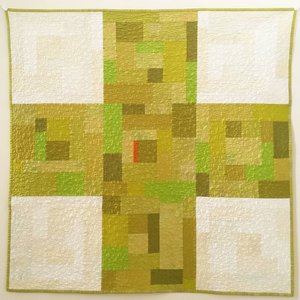
I started off just making quilts for myself while trying to learn. I also sometimes took commissions, but didn’t enjoy that. Then, I started getting into mixed media, and was a textile and mixed media artist. I was combining them, and doing a lot of magazine work, primarily some illustrative work with mixed media/textiles, and a lot of freelance work for mixed media magazines, and quilting magazines. They’re always looking for artists to write process how-to articles about their artwork. Their whole basis is to sell to people who say, "Ooh, I want to do that, too."
I would go into a craft store, or a hardware store, and I would think, "How can I use that object in a piece of artwork?" I was always looking for a new angle, or gimmick, so to speak. I'd incorporate that into either mixed media, or a mixed media art quilt. Sometimes I'd do photo transfers, or different embellishments. I'd sell it to a magazine with an article that would break down the process, and that led to being in collaborative books.
I was also selling a bit here and there on Etsy, and at local craft fairs. Truthfully, after a while, I felt burned out by all of that. In a way, it starts to feel like you're prostituting, because you’re trying so hard to give people what they want so you get paid, and meanwhile, at least for me, you grow more distant from saying anything that has any real emotional connection. I think that just kills creativity. I still do magazine work from time to time, but only when I’m contacted asking for something relevant to what I’m currently creating, and only if it’s something I feel comfortable sharing in that venue.
So now, you're doing lots of quilts. Is it more for art and gallery work?
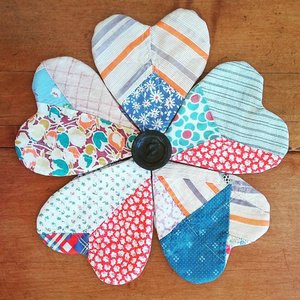
I grapple with this. Personal self-expression, for the most part. There seems to be this path that you’re supposed to take as an artist…partake in art shows, gallery exhibits, accept commissions, all to hopefully make a living from your art, which I would love someday to be able to do. However, I'm an introverted person, and so, I'm not good at the whole selling myself. I shouldn't say that, I can fake it, but it wears me the hell out. I'm exhausted afterwards. I kind of shy away from that now.
I've been in group shows, but I'm not good at pushing my art. I’ve been selling on Etsy for a while, as I was more comfortable selling behind a computer screen. Not as nerve-wracking. But, prices for quilts are often low-balled there, well they’re often low-balled everywhere…and because I was selling, I also wasn’t able to build up a body of work to exhibit. So, I’ve really pulled back in the last year or so, now mostly selling some original PDF sewing patterns, which gives a little nice passive income.
Meanwhile, I’m just creating, and holding on to what I make, trying to figure out what I want to do with it. Sometimes, I'm asked to do a workshop, or a trunk show, and talk about my work, so it’s nice to have that body of work to physically show. Sometimes, I think maybe in the future, because I am tending to build up a body of work, and often concentrate on certain themes, that I will pursue a gallery show. Other times, I think I may pitch a quilt book, or maybe I’ll start entering quilt show exhibits. I really don’t know what path I want to take, but I don’t stress about it too much either anymore.
When did photography start in earnest?
I'd say it began probably around the time I started to make the connection that this scenery, and all the farms and the barns were hitting me emotionally. I've lived in Lancaster since I was 5-years-old. I grew up in Manheim Township. I lived in the city for about fifteen years, and then we moved to where we live now, right next to the Berks County line past Ephrata, Denver, where we’ve lived for about twenty years. During most of that whole span, even when I was 5-years-old, I didn't want to be here.
Where did you come from?
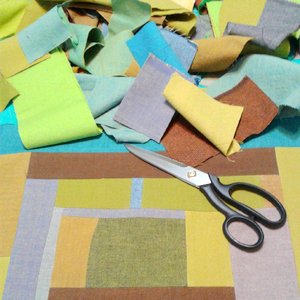
Baltimore. I didn't feel like I belonged in Lancaster County. My goal was to always get out of here, but for whatever reason, every plan fell through. I met my husband, we got married, we had kids, he’d be connected to his job, and then when I went into that creative funk, I finally realized that I'm probably exactly where I'm supposed to be.
Once I started connecting with this farmland, and it wasn't that I never appreciated it before, I was always telling my kids, "Look! Look out the window. This maybe isn't going to be here in a few more years." But, the connection wasn't on this soul-level before, and I started to take pictures around that time, right when I started to realize that this local imagery was feeding something deep inside of me. I had another blog for a while that I was posting them on, but Instagram was great because it was just so quick.
You said in school you had a photography course. Was that the first time you were picking up a camera?
Oh, you know. I always had a camera. Little brownies, and Kodak with little flash cubes…always had a camera.
So after school, it took a little while to get your phone I'm imagining, and you aren't taking a lot of photos immediately, so it's after this awakening?
I was originally using this little Kodak digital camera, taking pictures of family stuff, then the barns. I don’t remember any real awakening with the photography, it was just a natural progression and flow. Also, somewhere along the way, I realized that when I take a photograph, the memory of the whole situation solidifies more in my brain. I can recall events better once I take a photo, even if I only look at the photo once or twice afterwards. It sort of gets stored in my memory, and I can just retrieve it when I want. Otherwise, my memory isn’t always so sharp.
I imagine you'd look back at the family photos and you'd see the artistry all the way through.
I think there was always that in taking photos, looking at things a certain way. I lost a lot of them in a computer crash. I have some of the old barn pictures. I'm not very good at archiving, and saving. That's probably for a reason. There’s a rebellious side of me. I know I'm probably supposed to, but still don’t. I try not to get too attached to things. Sometimes, I’ll delete things on purpose, but usually only if I'm in a fanatical cleaning mode.
Discovering Instagram, how soon are you let's say on #Lancastergram?
Probably pretty quickly. I have no memory of how that even happened. I guess I'm uploading a picture, and I'm learning about hashtags. Somehow, we local people, we all started friending each other, and that #Lancastergram tag came up, and then the contest.
What other social media channels were you using at the time?
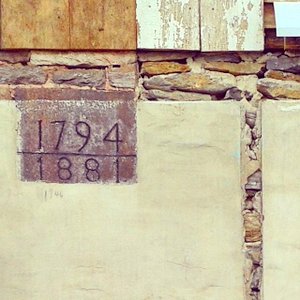
I have had a blog for a long time, so Blogger, and Etsy. I tried Twitter, but didn't like it. I just got on Facebook a year ago, kicking and screaming. It's too visually all over the place for me. I don't get the flow of it, but it’s a nice way to stay a bit in touch with family and friends. And Flickr, I used to love Flickr before all the changes, and the community was great much like how Instagram has now become. I still post most of my textile work there, but I don’t interact much. Just post and run.
So, with photography, do you ever set yourself on a mission or does it come as you're out?
There are some times that I definitely want to go out with the intention of shooting photos, but usually, we're just going from point A to point B. I take most of the photos when my husband's driving, but sometimes I'm driving (sheepishly). You can't drive anywhere on these back roads where you don't see something that knocks your freaking socks off. There's not a day that we're not taking a drive somewhere where we're not like, "Look at that!"
Do you ever see one of these scenes when you're not able to capture it then and so you go back later?
Yes, all the time. Every time. Unfortunately, I have no sense of direction, so if I find it on my own, I'm probably never going to get back to it. I truly have wound up lost going around the block. Trying to get home from Reading to Reinholds, which is a half-hour drive, I've wound up in Philadelphia, and then from there, wound up in Gap still trying to find my way home. What I'm saying is, if I'm driving, if there's nowhere I can pull off safely, I'm generally not going to remember how to get back to where I saw that.
My husband is the opposite. He can find everything everywhere. Usually, I'm yelling, "Go back! Circle around!" And he's very accommodating about that. He's great. For every shot that I get, there's 100 that I pass up and couldn't get.
If you could find a gold mine of a shot on your way home tonight, what would it be?
It's always the barns, the old ones. There'd probably be a door open. I particularly like the white barns, so you get that black negative space with an open door and then some windows. I’m very much into the windows right now, and all the off-kilter lines, and just the way the light hits it. And then I'm happy.
You had mentioned earlier illustrating, and it sounded like writing …
Narrative stories a long time ago, and more technical writing when I would do freelance. Once I read this book where you're supposed to excavate your life and you’re supposed to read your old school records, like back to elementary school. I was sure I knew what they were going to say, that I was “good at art”. So, I did that out of curiosity, to validate what I was sure I already knew about myself, and that was never mentioned.
What was mentioned was my creative writing, over and over, but no, I don't do that anymore. When I think deeply, or creatively, I tend to think in pictures, not words. I think in words superficially, like constant annoying chatter. I could sit down and try to compose something, but I'm not interested in doing that. It doesn’t hold my attention. I seem to want pictures over words. However, a lot of times, like now, I say no to something, and then I think about it later, and wonder…maybe? So, you never know. I still doodle a little bit.
Are you happy with your stuff?
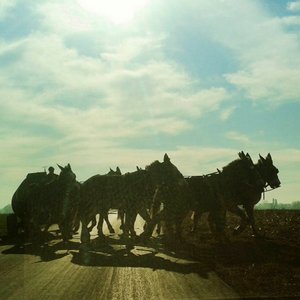
No, never, and I think that's one of the reasons I gave up illustrating. I think I'm too critical. There are two things: one is self-criticism, and that was ingrained in me by a beloved family member who shall remain nameless, although he's passed away So, there’s this constant feeling of whatever I made was never good enough. I was always told it was good, sometimes very, very good, but then told how I could have made it better if only I had done x, y or z.
I know this person was himself artistically frustrated, and who knows what baggage he himself was given to carry, and I don’t believe his intent was ever to harm, so I'm at peace with that. But it's hard for me to shut that critical chatter off in my brain. I was never able to do a drawing without dissecting it, and picking it apart, even when I knew it was good.
And that's what motivated me to get into textiles. There was this breath of space and air between myself and the outer/inner critic. It was an area that my truly dear family member had no preconceived ideas of, no right way or wrong way, and thus I got to swim in free open waters.
It seems there's more exactness … you can't go too wrong. In illustration, you have to make it look like something.
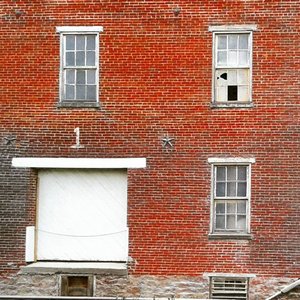
That's the second thing, and this one's on me. I was basically taught by my family, and by teachers in school, that being an artist was duplicating something very realistically. It wasn't even in the context of being an illustrator, it was art itself, and that's so untrue. I grew up with this idea that if I was going to paint that chair, it's not the emotion I feel towards the chair, and I'm not looking for the story of that chair, I'm just looking to duplicate that chair. There's no emotional connection, so it was done, and it's like, now what? It just left me feeling empty.
As I got older, probably after art school, I realized how false that was, but because I'd gone into graphic art and illustration, that was kind of reinforced. I don't ever remember being taught to have any emotional connection to your artwork, which is so odd looking back. Maybe I just didn’t get it back then.
I do remember one fabulous instructor who wanted us to paint our breakfast on a large scale. Mine was of coffee, and a blueberry Pop-Tart. I really went to town on this. It looked so real. When he saw it he said, lovingly, “You’re not supposed to try to paint it like you’re Rembrandt. Have some fun with it for Pete’s sake! Put some life into it!” And, I got what he was saying, but I couldn’t figure out how to do anything but paint it like it looked, and I guess that’s why I always felt unsatisfied with my illustrative attempts. Art should always make an emotional connection. That’s what I try to do with my textile work and my photographs, and in those two mediums I do feel like I am able to get there.







